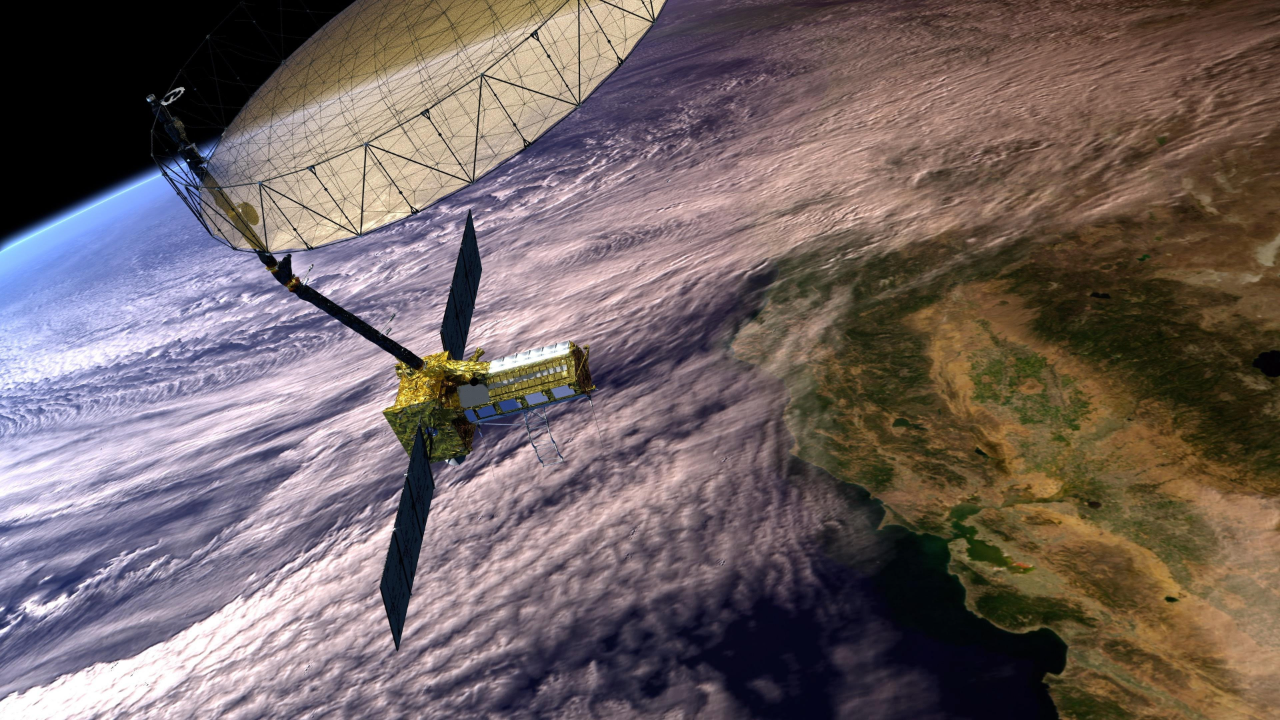Watch India and NASA launch the powerful NISAR Earth-observing satellite on July 30
NISAR is "the most sophisticated radar we have ever built."

A joint Earth-observing satellite from the Indian Space Research Organization (ISRO) and NASA is ready for launch.
A Geosynchronous Satellite Launch Vehicle Mark II (GSLV Mk II) rocket rolled out to the launch pad at the Satish Dhawan Space Centre in Sriharikota, India, last week, beginning final preparations ahead of the targeted July 30 launch of NISAR, an advanced Earth-observation satellite developed by ISRO and NASA.
Liftoff is scheduled for Wednesday, July 30, at 8:10 a.m. EDT (1210 GMT; 5:40 p.m. India Standard Time). You can watch it live here at Space.com, courtesy of NASA.
GSLV Mk II is India's largest rocket — an expendable, three-stage launch vehicle that towers nearly 170 feet (52 meters) tall. It sports a 138-ton solid rocket first stage, aided by four liquid-fueled boosters at its base.
A single hypergolic liquid-propelled Vikas engine powers the rocket's second stage, with its third and final stage, the Indian-developed Cryogenic Upper Stage (CUS), responsible for orbital circularization and placement.
NISAR (NASA-ISRO Synthetic Aperture Radar) is "the most sophisticated radar we have ever built," NASA Director of Earth Science Karen St. Germain said during a press call on Monday (July 28).
The satellite will use that radar to measure changing conditions across the globe "as small as a centimeter," St. Germain said. NISAR will image the planet's land and ice, as well as specific portions of the ocean's surface, every 12 days, according to a mission description.
Breaking space news, the latest updates on rocket launches, skywatching events and more!
"With NISAR, we will see the precursors to natural hazards such as earthquakes, landslides, and volcanoes ... We'll also see human-induced land changes such as farm and ranch production, use of water for municipal drinking and farm irrigation, and infrastructure and land development, houses, commercial buildings, railroads, highways and bridges," St. Germain explained.
"We will put NISAR science and observations to work guiding and informing decisions so we can abundantly feed ourselves, safely build housing and transportation systems, and better prepare for and respond to natural hazards," she said.
NISAR is scheduled for deployment about 18.5 minutes after liftoff, after delivery to a circular polar orbit, at an altitude of 464 miles (747 kilometers). It's mission is expected to last at least five years.

Josh Dinner is the Staff Writer for Spaceflight at Space.com. He is a writer and photographer with a passion for science and space exploration, and has been working the space beat since 2016. Josh has covered the evolution of NASA's commercial spaceflight partnerships and crewed missions from the Space Coast, as well as NASA science missions and more. He also enjoys building 1:144-scale model rockets and human-flown spacecraft. Find some of Josh's launch photography on Instagram and his website, and follow him on X, where he mostly posts in haiku.
You must confirm your public display name before commenting
Please logout and then login again, you will then be prompted to enter your display name.
